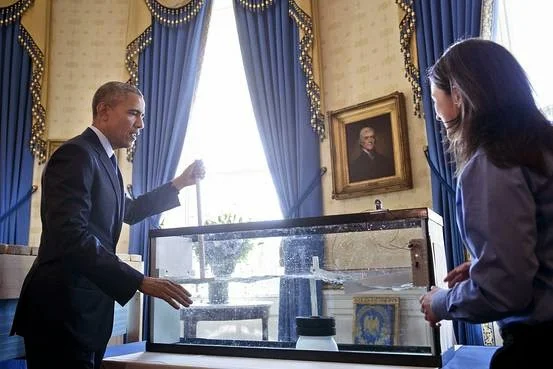This was the original slogan of the environmental movement that led to recycling becoming public policy in many if not most US municipalities: "Reduce, Reuse, Recycle."
It was the "recycle" that dominated, perhaps to its own detriment. But what seemed like environmental idealism became a surprising reality.
I remember when the city of Pittsburgh was about to begin mandatory recycling in the 1980s. One of the city's newspapers editorialized that it would never work, we lived in too much of a "throwaway society." I wrote an oped piece for that newspaper, claiming that it would work--that a combination of youthful idealism and especially a cultural resistance to waste in Pittsburgh's traditional, immigrant culture, reinforced during the Depression and World War II recycling, would make it feel natural.
It was quickly clear that I was right--people did recycle in Pittsburgh, and elsewhere. The problem has seldom been compliance. But especially once it seemed there was money to be made doing it, the problems were economic.
When we moved to the North Coast almost 20 years ago, Arcata had no curbside recycling. What they had instead was a Recycling Center, and a strong environmental ethic. Like other citizens, we separated recyclables in our kitchen and garage, and periodically I would load up the Volvo and take everything to the Recycling Center. I'd drive into it, park, haul out my boxes and stuff recyclables into the appropriate bins. We separated newspaper from cardboard, and glass bottles by their color. Plastics were a pain--all those numbers--but I could also easily recycle batteries and other somewhat exotic materials.
It was kind of a fun place, too. People were friendly, and there was a shop with donated--hence recycled--items, including books, records, clothes, stereos, lamps etc. but mostly elements people used to build and replace things. For awhile there was a free bin of books, where I found a rare book I truly treasure (Fernald's English Synonyms that separates them by shades of meaning, instead of jumbling them together Roget-style, as if they actually all meant the same thing.)
But then Arcata Garbage got the contract for curbside recycling, and the Recycling Center faded and closed.
At first, Arcata Garbage supplied us with a reycling bin with two sides: one for paper and cardboard, the other for metal and plastic.
In the past few weeks, they've replaced the two-compartment bin with one, and it's no longer necessary to separate at all. The latest communique from Arcata Garbage describes what is recyclable and what isn't. But if you're uncertain what qualifies, they have a new slogan: When in doubt/throw it out.
So there it is: 20 years from Reduce, Reuse, Recycle to When in doubt/throw it out. I've read recently of consternation in the recycling/garbage business because China is no longer accepting certain plastics---apparently they were taking most of it, so few US companies invested in processing here. I suspect that's true of more than certain plastics. It really would not surprise me if everything in our recycling bins ends up in landfill. But I keep doing it anyway, whispering those erstwhile magic words to myself. Reduce. Reuse. Recycle.
Update: An NPR report on "single stream recycling" of this kind says that about a quarter of it winds up in landfill, 40% of the glass. Some due to consumers recycling wrong stuff but also due to breakage and cross-contamination. One enviro quoted as saying:"In terms of preserving the quality of materials so that the maximum materials collected can actually be recycled, single-stream is one of the worst options," she says. The report concludes that while single stream may be more "convenient":"But as single-stream processing continues to increase in popularity, the trade-off will be fewer recyclables recycled." Here in Arcata I don't recall being given a choice.
Origins: The Winter Solstice
-
The Winter Solstice is considered the most celebrated annual event in the
history of human cultures around the world. Ancient structures survive in
m...
2 weeks ago

























